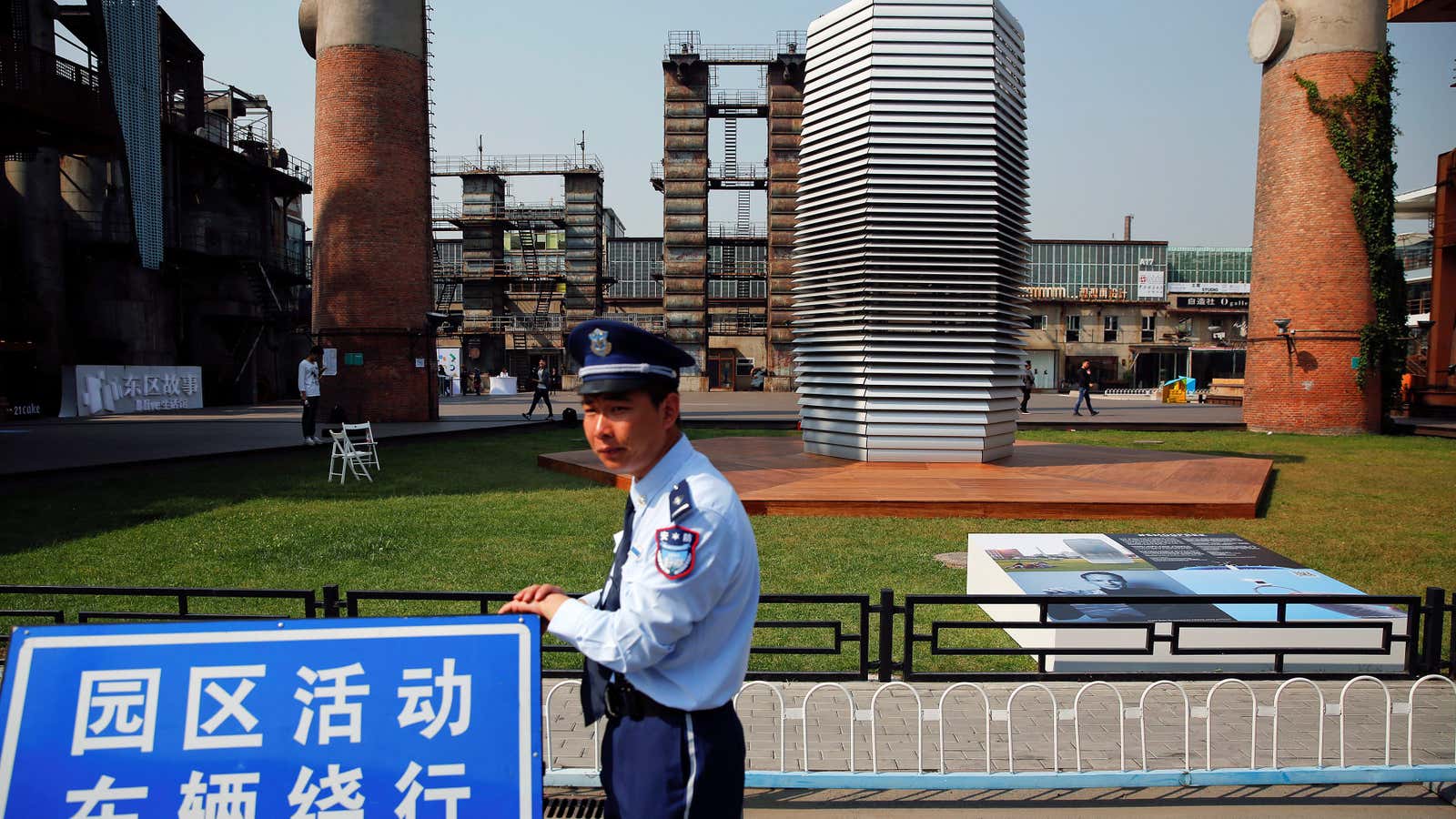The giant pineapple-like air purifier in Beijing has failed a series of air-cleaning tests, but China’s still keeping it.
The Smog Free Tower would, it was said, purify 30,000 cubic meters (1 million cubic feet) of air every hour, collecting over 75% of PM2.5 and PM10, the small particles that contribute to smog. It was created as an art installation, which converts the particulate matter in the surrounding air into jewelery. However, a test run by the China Forum of Environmental Journalists (CFEJ), a non-governmental organization, showed that the tower was not doing the job “effectively.”
CFEJ published results of 50 days of tests on Nov. 20 (link in Chinese), stating that PM2.5 levels were above those promised. For instance, the PM2.5 concentration was 89 micrograms per cubic meter within five meters (16 feet) of the tower, and reached 109 micrograms within 100 meters. The World Health Organization’s maximum safe level of PM 2.5 is 25 micrograms (pdf. p. 9) per cubic meter over a 24 hour period.
CFEJ concluded that the tower’s effect on PM2.5 “was unstable and the effective range was very much limited to its immediate surroundings.” Some experts told state media outlet China News that “the weight of the machine’s captured particulate matter per hour is less than that of a spoonful of salt.” (Update: A company representative told Quartz at the time of publication that it had not independently verified the test results. In May 2017, according to the company, data compiled by a scientist from Netherland’s Eindhoven University of Technology showed that the tower substantially brought down particulate matter up to a distance of 20 meters (65 feet).)
The tower’s developers, Dutch studio Roosegaarde, claimed on Nov. 23 that the tower had cleaned an air volume equivalent to that of ”ten Beijing National Stadiums” in its 41-day test. Roosegaarde told Quartz on Nov. 25 that “There has been some misinterpretation in the media on naming and results,” but didn’t address the findings by CFEJ.
The seven-meter-tall purifier was introduced into Beijing late September this year, where PM2.5 levels were 17 times greater than the WHO safe limit. Some are now questioning its purpose. ”Anyone, only if you can see, smell and your lungs function normally, wouldn’t need to spend money building a smog alert,” noted one user on Chinese social-media site Weibo. Another commented: ”[Officials] don’t deal with the root of air pollution, but what’s the point of spending money buying this useless equipment?”
China is nonetheless keeping it for “educational purposes.” It will just change its name from “Smog Free Tower” to “Smog Alert Tower.”
This piece has been updated to on May 31, 2017 with the new findings of the tower’s effectiveness.
